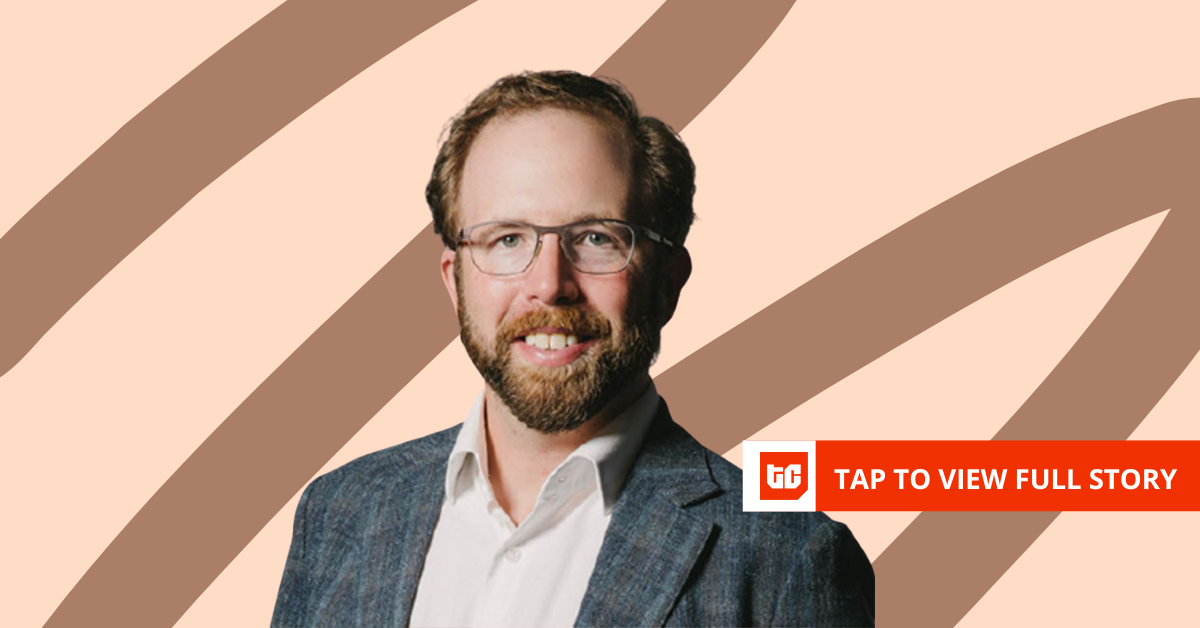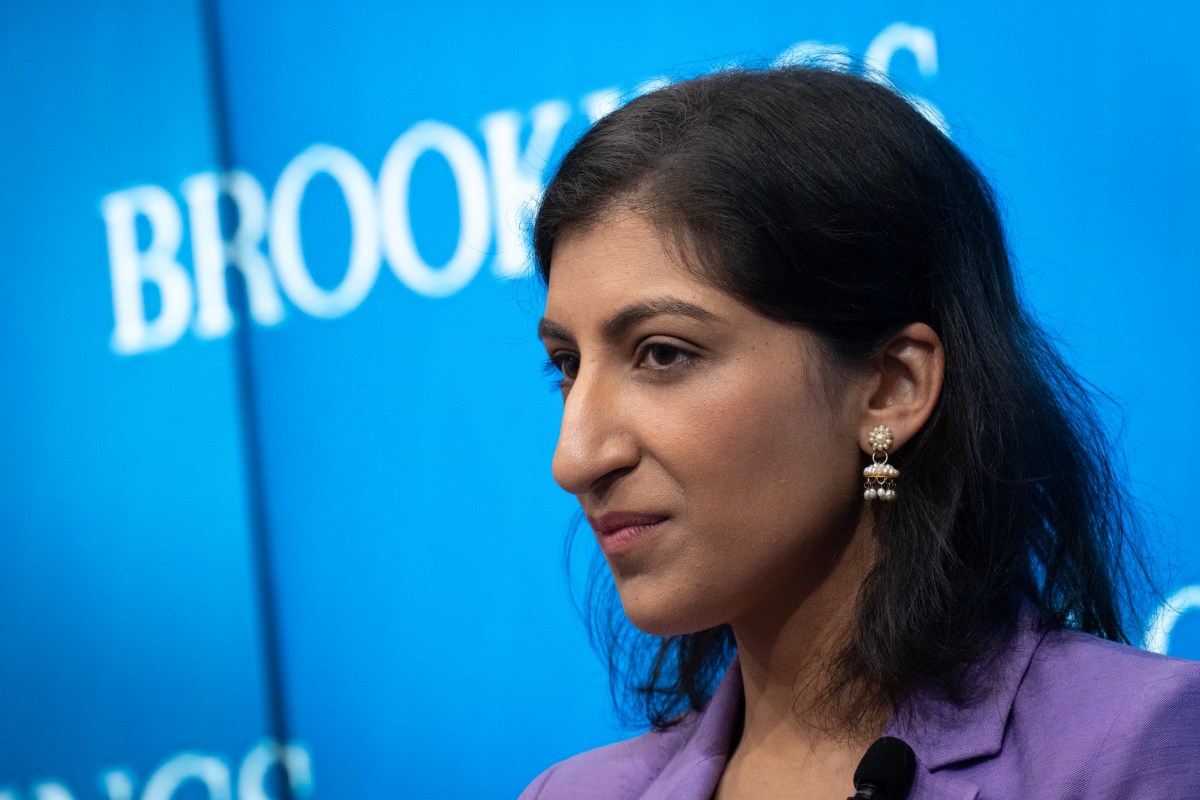Adaptation is often the determiner between survival and extinction in the animal kingdom, and according to Alexandre Lazarow, the managing partner of Fluent Ventures, a global early-stage fund, the same principle applies to startups.
“I think innovation today functions more like a global supply chain. Ideas travel, but they require local adaptation to succeed,” he told on a call. His investment thesis can be summed up as: product–market fit may be universal, but monetisation and delivery must be tailored to local contexts.
Fluent Ventures is deploying $40 million through a fund, an incubator, and a structured co-investment vehicle with limited partners. Its cheques range from $250,000 to $2 million across pre-seed to Series A stages with plans to back 22–25 startups in fintech, healthtech, and e-commerce with capital reserved for follow-on investments.
Lazarow developed his investing thesis in frontier markets after backing early neobanks like Chime and Neon in the U.S. and Brazil, seeing that while the business model revolved around providing modern and transparent banking in every market, the business model changed depending on customer needs.
The work involved in writing a book (Out-Innovate: How Global Entrepreneurs from Delhi to Detroit Are Rewriting the Rules of Silicon Valley) also helped shape this thesis. After interviewing Gojek founder, Nadiem Makarim, and learning how the Indonesian ride-hailing startup expanded into food and medicine delivery, Lazarow saw firsthand how the company thrived by adapting its model to local needs.
“He essentially fused the Uber idea with local needs and combined it with India’s logistics insights and the super app approach from China. That hybrid approach ended up outperforming Uber’s original model in his market,” Lazarow said. “And now, if you look at Uber in the U.S., its biggest growth area is food delivery, an idea arguably inspired by those international adaptations.”
Some of Africa’s biggest startup successes have come from adapting global models to local realities. Paystack raced to its $200 million acquisition by Stripe by tailoring Stripe’s infrastructure-first approach to Nigeria’s fragmented payments landscape. While Jumia has yet to achieve profitability, it became Africa’s first unicorn by localising Amazon’s e-commerce model for the continent’s unique logistical and consumer challenges.
And it’s not just in Africa that localising global models has driven success. In 2012, 83% of global startup ecosystem value (the sum of startup valuations and exits) was concentrated mostly in the U.S. By 2023, that share had dropped to 61%, reflecting a significant decentralisation of startup activity as more founders build for local needs in emerging markets.
spoke to Alexandre Lazarow to understand his investment thesis, exit history, how he picks founders, and advice for other investors.
This interview has been edited for length and clarity.
As someone actively investing in Africa, what sectors do you believe are most in need of local innovation today, and why?
As a firm, we invest in three broad but foundational categories: financial services, commerce, and digital health. That focus reflects our conviction that these sectors form the bedrock of emerging market economies. Financial services alone represent about 20% of the African economy. That’s where we spend most of our time because the need is vast, and the innovation potential is deep.
Within those sectors, are there any specific business models you’ve found especially effective in emerging markets?
We’ve made two investments in Africa so far, and I expect that number to grow significantly over time. One business model I’m really excited about actually comes from India — B2B marketplaces. In India, four of the ten largest unicorns are vertical B2B marketplaces. The core idea is to empower small buyers and sellers, giving them the tools and advantages that normally only large businesses enjoy.
These platforms combine vertical software (for things like inventory and order management) with embedded financial services such as credit. The principle is the same: provide small businesses with infrastructure that helps them scale like much larger enterprises.
I believe that same model has even more potential in Africa. For instance, we’re early investors in Matta, which I see as the African localisation of OffBusiness. We also invested in Sabi.
These B2B platforms are important because they don’t just offer digital access; they also tackle structural barriers that small businesses face every day: poor access to capital, fragmented logistics, and weak supply chains. By solving those problems in a way that’s tailored to the local context, they’re doing something very meaningful and very scalable.
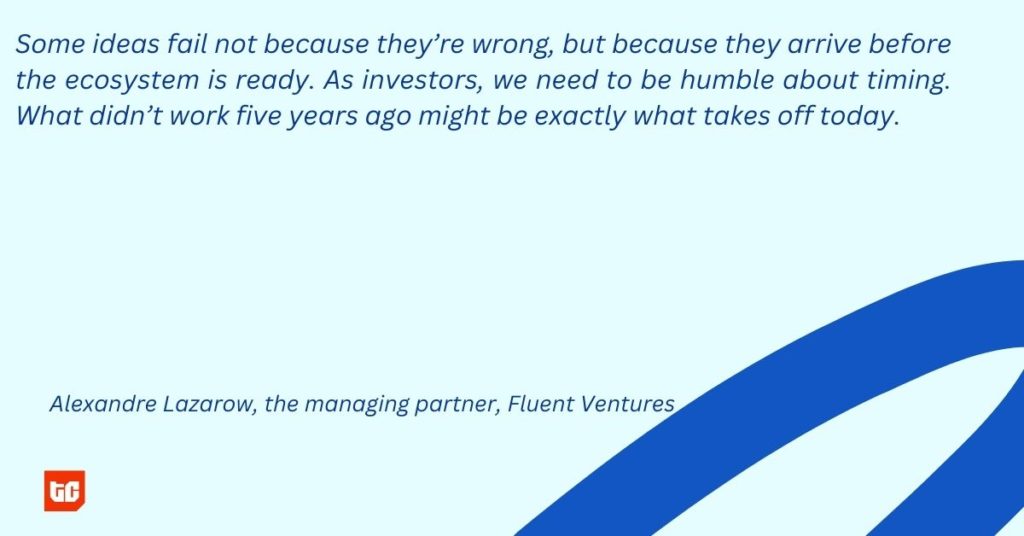
One thing I’ve noticed in Africa and many other emerging markets is that theory often doesn’t line up with reality. Have you come across a sector that seemed promising on paper but didn’t quite scale the way you expected? What made it difficult?
I have some scar tissue in this area, particularly from the off-grid solar sector. I was genuinely obsessed with the promise of small-scale home solar systems across emerging markets, especially in Africa.
Here was the pitch: You had this massive gap in power infrastructure. The centralised grid wasn’t reliable, wasn’t affordable, and wasn’t reaching enough people. Meanwhile, technologies were improving: solar panels were getting cheaper, mobile money was enabling pay-as-you-go models, and there was a growing awareness of the need for energy resilience. On paper, it looked like the perfect venture opportunity.
We evaluated and invested in several companies in the space. The pitch decks were compelling. The unit economics looked workable. It all seemed aligned. But when it came time to scale, reality hit hard.
Affordability turned out to be a massive barrier. The systems themselves, even the basic ones, were still too expensive for many of the target users. The accessories you could add on, like fans, TVs, and fridges, were often unreliable or cost-prohibitive. And even when customers could pay, the customer service and maintenance infrastructure were fragile. It was hard to keep things working in remote areas. It just didn’t add up to a pure venture-scale business — not in that wave, anyway.
Are you saying it wasn’t the idea that was flawed, but maybe the timing?
Exactly. I still think the insight behind decentralised solar is incredibly powerful — the idea of more resilient, home-based energy production makes even more sense today. We’re seeing those same principles resurface in other geographies.
For example, in Europe right now, one of the fastest-growing companies in the energy sector is Octopus Energy. They’re focused on smart, decentralized systems — battery backups, smart appliances, and distributed generation. It’s not the same as what was being built in Africa, but the underlying insight is similar.
While off-grid solar didn’t take off the way we hoped the first time, I wouldn’t rule out a resurgence. I think we’re at a point where the ecosystem is finally catching up to the ambition. The tools are stronger, and the urgency is greater.
In short, some ideas fail not because they’re wrong, but because they arrive before the ecosystem is ready. As investors, we need to be humble about timing. What didn’t work five years ago might be exactly what takes off today.
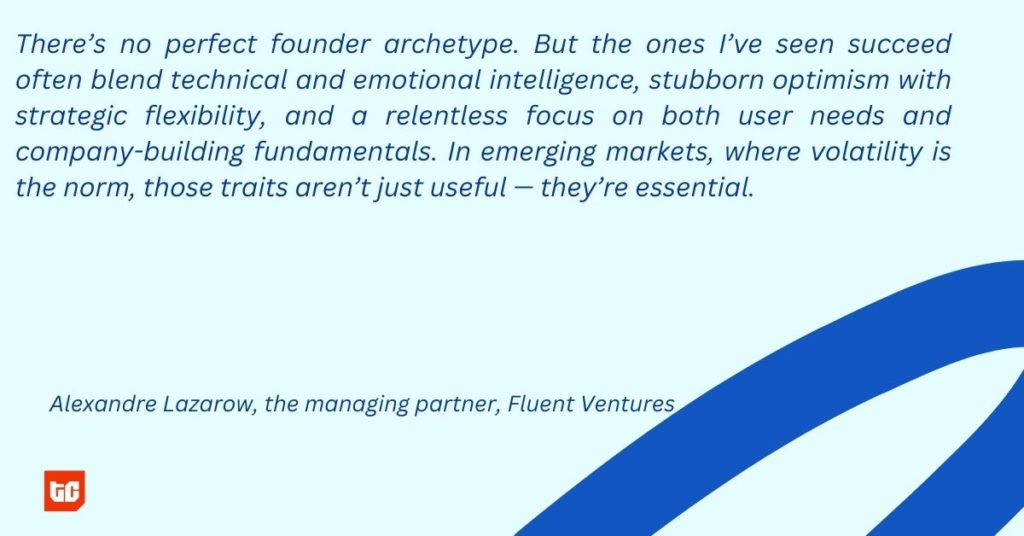
Let’s talk about the people building these companies. In your view, what type of founder profile tends to succeed in the markets you’re focused on, particularly in emerging markets?
That’s a really important and nuanced question. And while I can only speak from my experience, I’ll try to break it down. The founders I’ve backed typically share a few key characteristics, regardless of geography. These traits aren’t exclusive, but they’ve consistently shown up in the people who’ve built enduring companies, especially in tough, fragmented, emerging markets.
Deep domain expertise. I look for founders who’ve “gritted their teeth” on a real problem. They’re not starting a company because it’s trendy or because they want to be a founder; they’re doing it because they’ve lived the problem and are obsessed with solving it.
Often, they’ve worked in the sector before. They understand the nuance. Maybe they were operators in a legacy industry, or they saw something broken and knew how to fix it. Whatever the case, they’re not tourists. They’re locals, not just geographically, but in mindset.
Another thing I look for is a demonstrated pattern of entrepreneurial behaviour. That doesn’t mean they need to have been a CEO before or had a big exit. It means they’ve shown hustle. Maybe they started something in school. Maybe they built a product inside another company. Maybe they’ve just shown resilience and creativity in hard environments.
I’m looking for signs that they know what it takes to build something from scratch and keep it alive. I want to know: Can they recruit? Can they ship the product? Can they sell?
The third is cultural agility and humility. This one is particularly important in emerging markets where customer bases are diverse, infrastructure is uneven, and expansion often means crossing linguistic, regulatory, and economic boundaries.
The best founders are sponges: they listen obsessively to their users, are humble enough to course-correct, and can lead multicultural teams. They build organisations, not just products. They’re constantly learning and reanchoring.
This quality also shows up in how they scale. In smaller markets, say, Kenya or Senegal, you can’t just win your home country and stop there. You need to think regionally from day one. That demands adaptability and a strong sense of vision.
Lastly, I’d say storytelling matters. Not in the superficial, pitch-deck sense; I mean the ability to rally people around a big, hard vision. Good storytelling is critical for recruiting, fundraising, onboarding customers — everything.
Founders need to convince smart people to quit their jobs and join a risky mission. They need to help VCs see not just what is, but what could be. That soft skill — articulating the journey — is a hard requirement.
There’s no perfect founder archetype. But the ones I’ve seen succeed often blend technical and emotional intelligence, stubborn optimism with strategic flexibility, and a relentless focus on both user needs and company-building fundamentals. In emerging markets, where volatility is the norm, those traits aren’t just useful — they’re essential.
So, it’s not just that local startups are competing with global companies — they’re reinterpreting the model and winning.
Exactly. And we think this trend is accelerating. Let me give you a sense of how much: when I first started investing in emerging markets a decade ago, the number of cities globally that had produced a unicorn was four. Today, it’s 156.
This explosion is not random. What’s happening is that ecosystems are maturing. Founders who worked at the first wave of unicorns are spinning out to build new companies. These local “mafias” — like the PayPal Mafia in Silicon Valley — are forming all over the world. And they’re backed not just by foreign capital but by strong, homegrown VC ecosystems.
When I look at Africa, particularly Nigeria, Kenya, Egypt, and South Africa, I see a region that is exactly at this inflection point. You have seasoned operators starting their second or third companies. You have talent flowing in from local universities and the diaspora. You have more VC funds with Africa-specific knowledge than ever before. And the cost to build and launch a startup has dropped dramatically thanks to AI and better infrastructure.
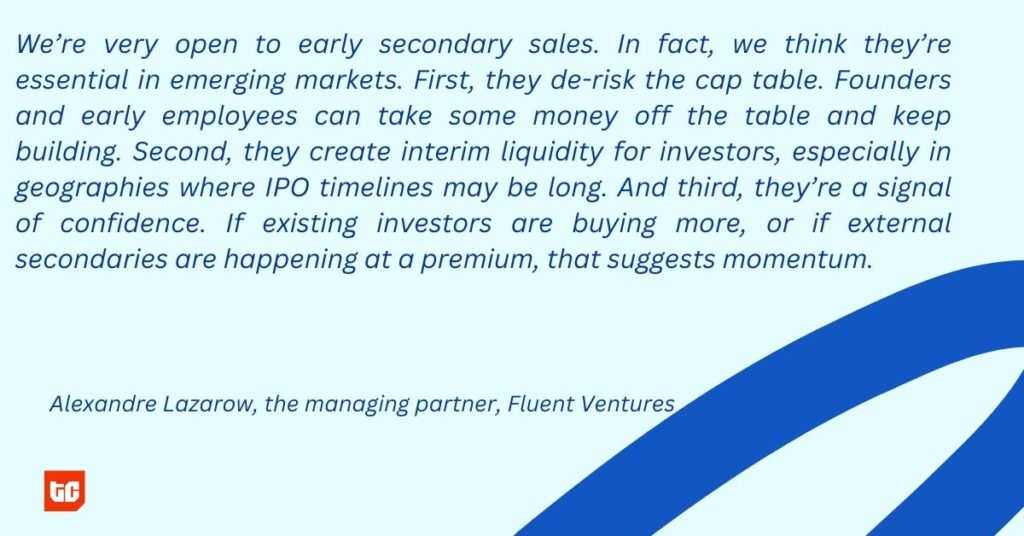
How does that impact your investment process? Do you look for localised versions of already-proven models, or do you try to spot completely new ideas?
It’s a mix. Let me give you two examples from Africa to make this real. We’re early investors in Matta, a B2B marketplace, and in Sabi, which is solving last-mile distribution and aggregation in the informal sector. Both companies are building models that have analogues elsewhere, but the way Matta and Sabi are going about it is entirely context-specific.
We start with global macro insights — ideas we know are proven and large. Then we look for pain points that are more intense in emerging markets. And finally, we search for founders who are not just copying but innovating because of those local constraints. That’s where the alpha is.
You mentioned your LPs include operators from Nubank, Creditas, and Sabi. How exactly do these experienced founders support your portfolio companies?
That’s been a huge part of how we operate. It goes back to the launch of my book, Out-Innovate. That project took me across the globe, interviewing over 100 entrepreneurs building outside Silicon Valley — unicorn founders, tech operators, and policy leaders. When I launched Fluent, I reached back out to many of them to become LPs in the fund.
The response was overwhelming. And now, our community plays a major role in three ways:
a)Sourcing: Many of our best deals come from this network. These are founders and operators deeply embedded in their ecosystems. When they refer a company to us, it’s almost always high-quality. For any startup founder looking to get on our radar, getting a warm intro from someone in that community is incredibly effective.
b) Diligence: When we’re evaluating a startup, we don’t just rely on spreadsheets or market sizing decks. We turn to our network and ask for insights that are often more valuable than any third-party research report.
c) Post-Investment support: This is where we try to be most helpful. We open doors not just to future investors, but to potential customers, mentors, and even employees. A founder building a fintech in Nigeria can be connected with someone who scaled a similar product in Mexico or Indonesia. That kind of cross-pollination is powerful.
We also have over 20 VC funds as LPs: funds whose GPs are plugged into local geographies. They’ve been helpful in co-investments, sharing notes on similar businesses, or just helping us think through regional nuances.
As an early-stage investor, what kinds of exits or secondary sales have you experienced? And what have you learnt about timing and managing liquidity from those deals?
That’s a great question — and one we think about a lot at Fluent. One of the design principles of this fund is that we start every investment with the exit in mind.
We ask ourselves: Is this a market with a real path to exit? Is there a historical precedent or structural conditions that make a major acquisition or IPO plausible? Or even more tactically, is there space for secondaries that give our LPs interim liquidity?
That lens — the “exit-first” lens — informs how we evaluate companies, geographies, and business models. We generally see three types of viable exit paths: IPOs (Initial Public Offerings), strategic acquisitions, and secondaries.
We’re very open to early secondary sales — in fact, we think they’re essential in emerging markets. First, they de-risk the cap table. Founders and early employees can take some money off the table and keep building. Second, they create interim liquidity for investors, especially in geographies where IPO timelines may be long. And third, they’re a signal of confidence. If existing investors are buying more, or if external secondaries are happening at a premium, that suggests momentum.
We’ve already participated in a few of these. I won’t go into specifics because some are confidential, but we’ve seen secondaries work well as both a return mechanism and a bridge to later-stage capital.
In the companies where you’ve seen exits or secondaries, did those opportunities arise organically, or did you design them?
It’s a bit of both. In the best cases, we’ve designed for it, meaning we backed a team that was building in a category where we could already see comparables and eventual acquirers. But we also remain opportunistic.
Sometimes a company takes off, and suddenly a late-stage investor comes in with an offer for secondaries. If that helps everyone — employees, founders, seed investors — and the terms are healthy, we say yes.
What do global investors consistently get wrong about backing startups in Africa, or other emerging markets?
You can’t do emerging markets investing recreationally. It’s not something you can dabble in—doing one or two deals here and there, while your main focus is on 30 others in Silicon Valley. That just doesn’t work. It’s a completely different terrain. You can’t treat emerging markets like a tourist.
The only way to be truly successful in venture, especially in markets like Africa, Southeast Asia, or Latin America, is to be obsessed with the ecosystem. You have to live and breathe it. That level of immersion can’t happen over Zoom.
A big mistake I see global VCs make is thinking, “I’ve done well in the Valley, so I’ll be great in Africa too.” That mindset leads to poor judgment.
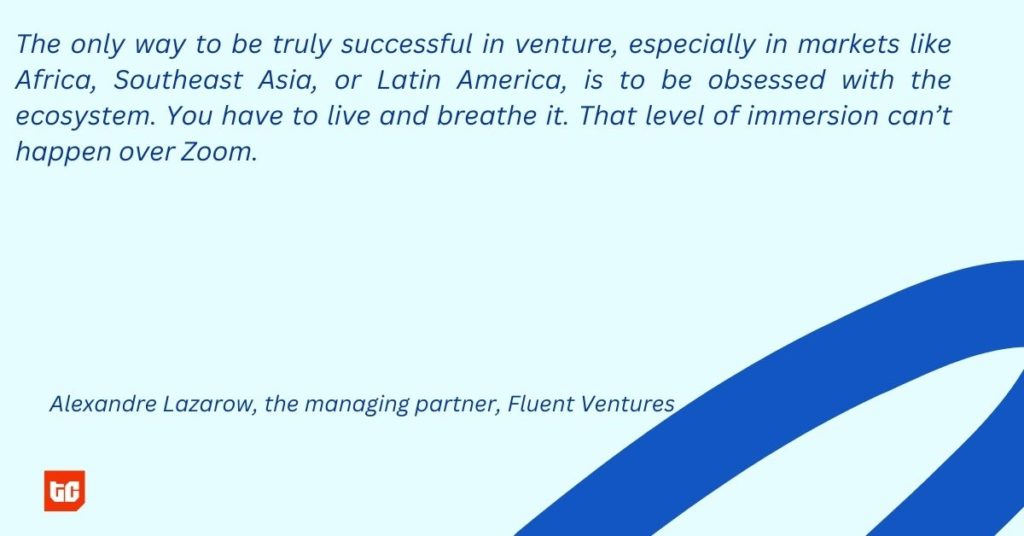
What would you advise U.S. or Europe-based early-stage investors who want to get better at understanding these markets?
If you’re serious about emerging markets investing, you need to commit to it. That means investing in local relationships and making trips often. This can’t be Zoom-only. You need to visit the market. See the infrastructure, feel the friction, talk to users. Sit with founders in Lagos or Nairobi, or Dakar. There’s no substitute for that kind of immersion.
Hire venture partners or scouts on the ground. You need people embedded in the ecosystem—ideally, former founders or seasoned operators—who can act as your eyes and ears, sense emerging trends, and help validate assumptions.
One thing we’ve done at Fluent is to bring founders from across emerging markets into our LP base. These people aren’t just financial backers—they’re active participants. They help us source deals, evaluate companies, and open doors for our portfolio. It creates a flywheel of trust and shared upside.
Investing in Africa—or any emerging market—isn’t about just catching the next unicorn. It’s about playing a role in building the entrepreneurial infrastructure itself. If you can’t commit to that, you shouldn’t be doing it.
What are some investments you passed on that you now wish you hadn’t? And what did you learn from those misses?
I have a pretty wide anti-portfolio. Let me give you two examples from different sectors—each of which taught me something important about my framework and how I evaluate opportunities.
I’ve never invested in ride-hailing companies. That means I passed on opportunities to back Gojek, Grab, and others at multiple stages because I’ve always gravitated toward startups that emphasise strong unit economics, capital efficiency, and long-term sustainability over blitzscaling.
These are the things I value in my investment thesis. So naturally, ride-hailing didn’t fit. That space was hyper-competitive, capital-intensive, and heavily dependent on subsidising growth early on. And to be fair, that approach saved me a lot of pain in many situations.
But it also meant I missed out on enormous outcomes, especially in Southeast Asia, where Gojek and Grab created enduring category-defining platforms.
That taught me that even if a sector doesn’t fit your exact framework, some exceptions might be big enough to reconsider your filters. I still stand by my reasoning, but I also now appreciate that scale and dominance, even when costly early, can become defensible moats over time.
I also misread the neobank wave in Europe—and I’ll own that completely. Back when I invested early in Chime and Neon, I was very sceptical of models like Revolut. Because at the time, there was no meaningful interchange revenue in Europe (unlike the U.S., where the Durbin Amendment kept it high). Revolut and N26 relied heavily on cross-selling financial products to generate revenue, and their unit economics, at least early on, looked weak to me.
I made a call that Europe’s model was too risky. But I was wrong. What I underestimated was the power of product breadth and user engagement.
The ride-hailing and European neobank misses were very different, but they taught me the same larger lesson. Venture is about conviction and frameworks, but it’s also about flexibility. You can be right for the wrong reasons and wrong while still playing by your rules.
The goal isn’t to eliminate all misses. That’s impossible. The goal is to build a consistent, rigorous decision-making process and then learn from where that framework falls short.

